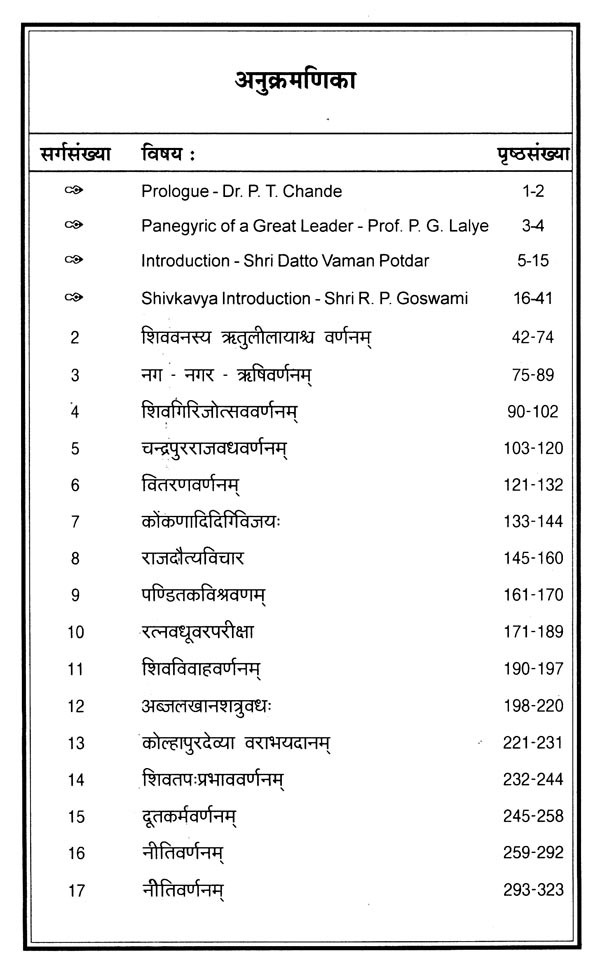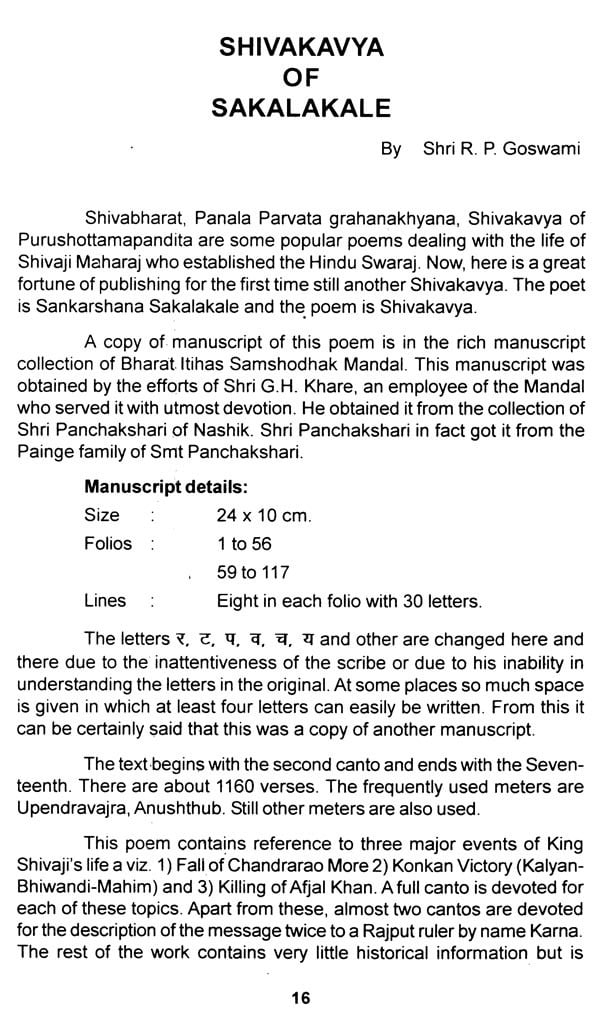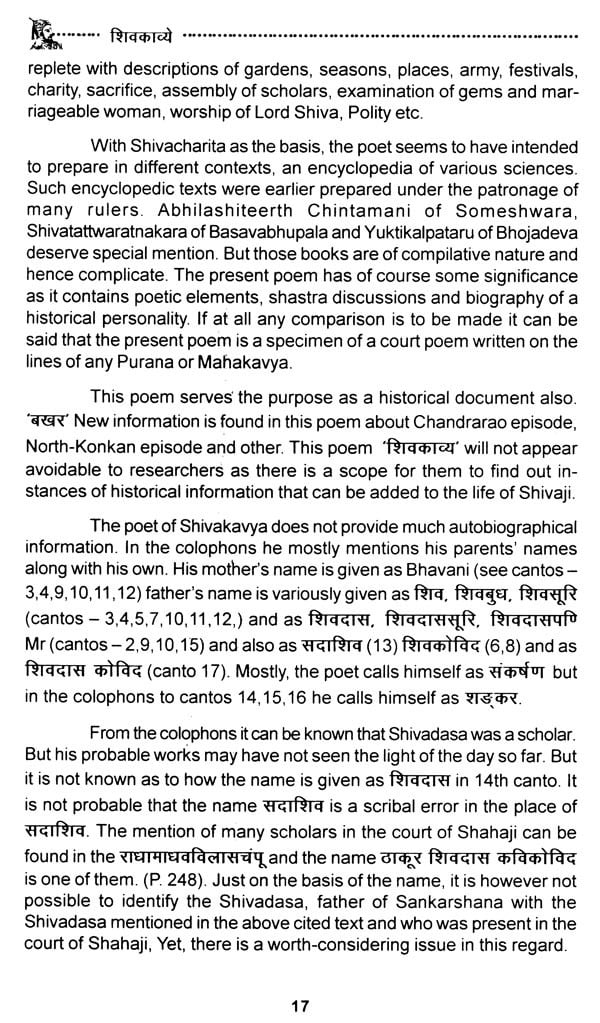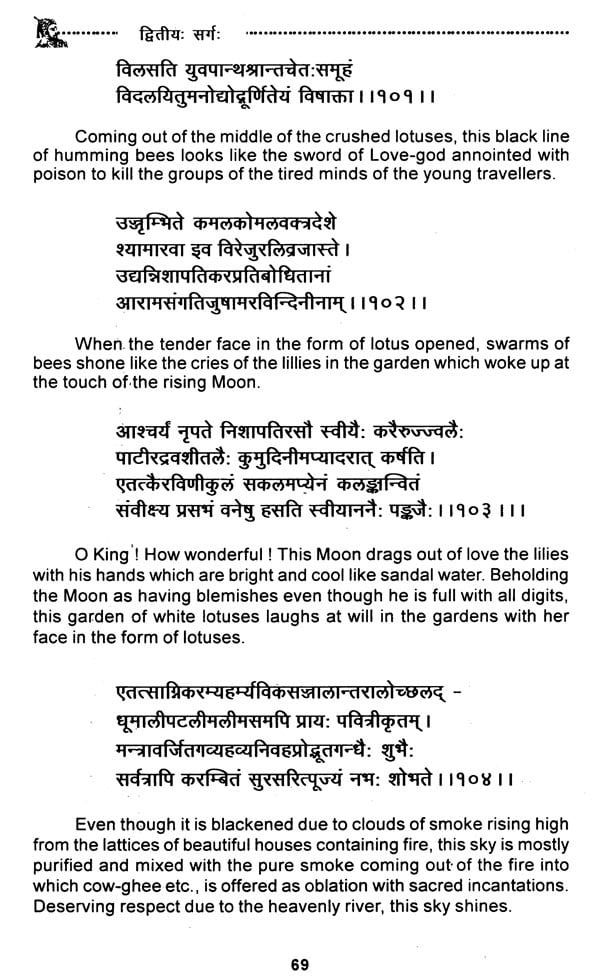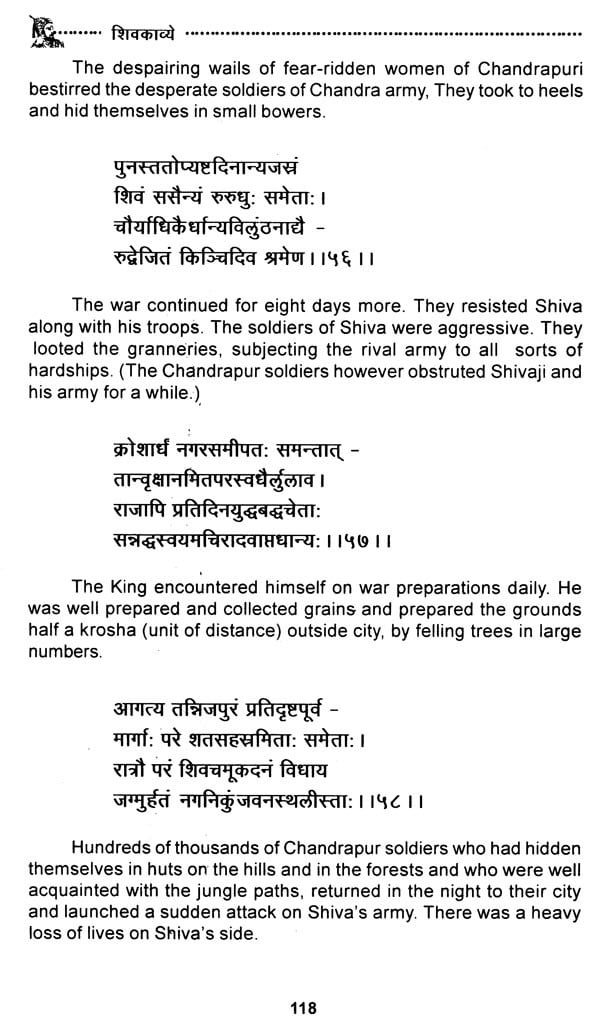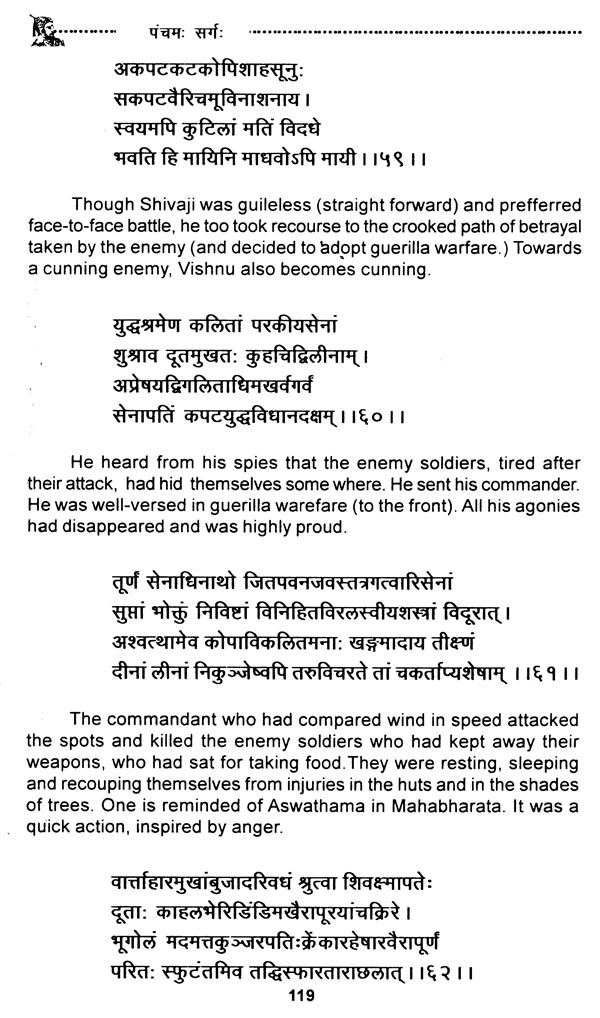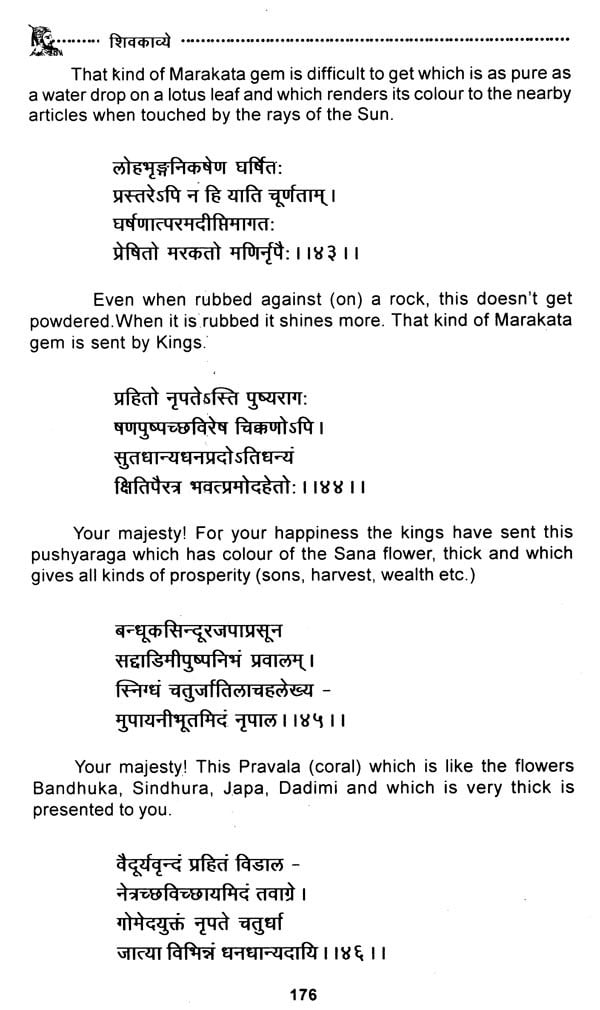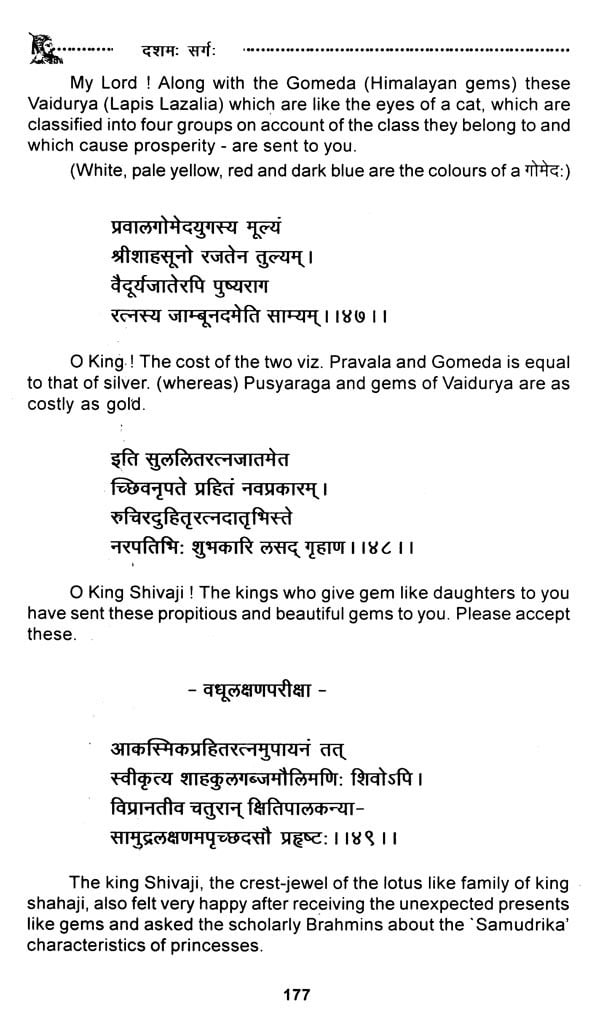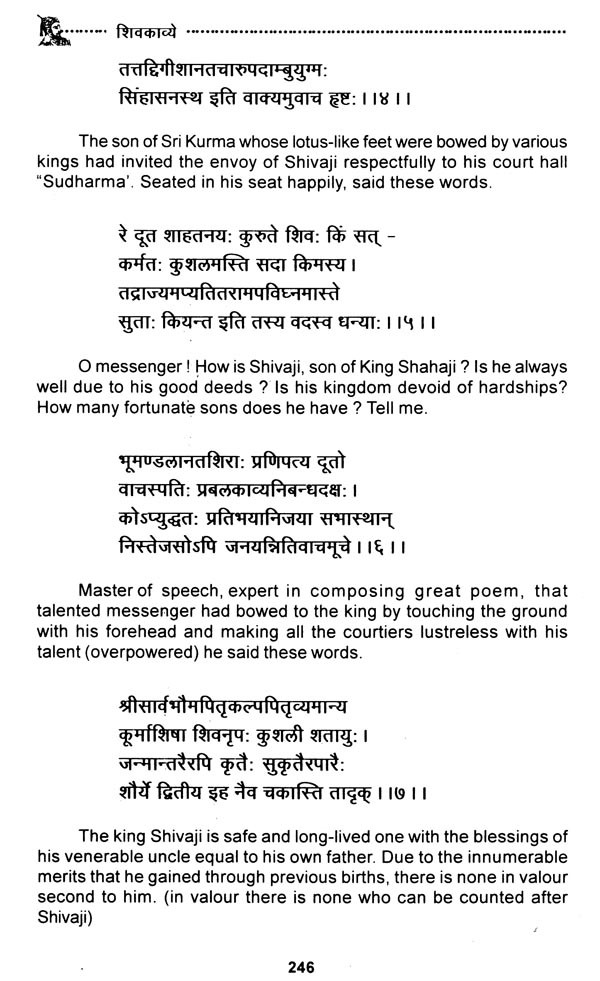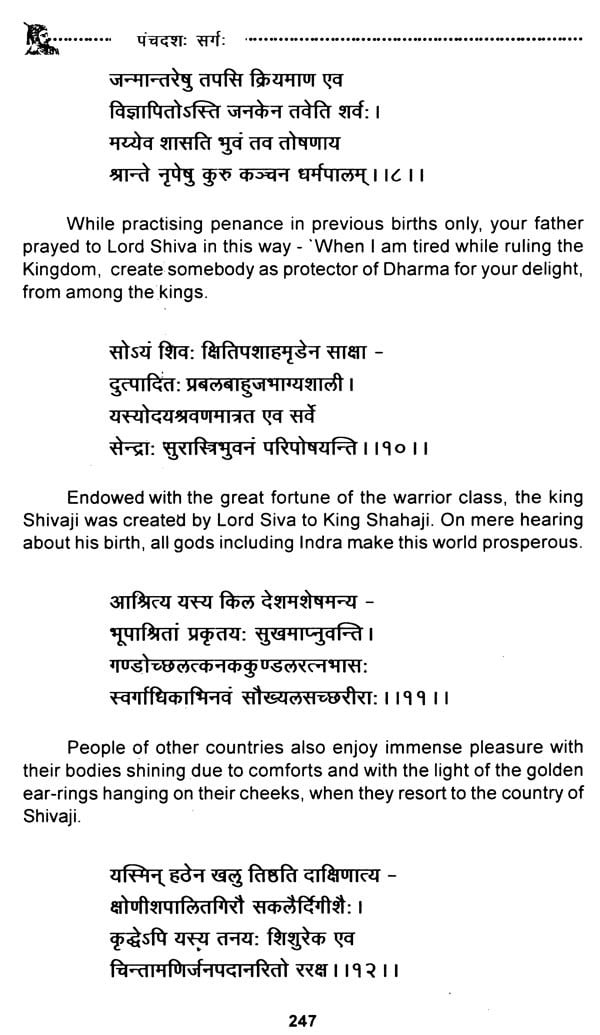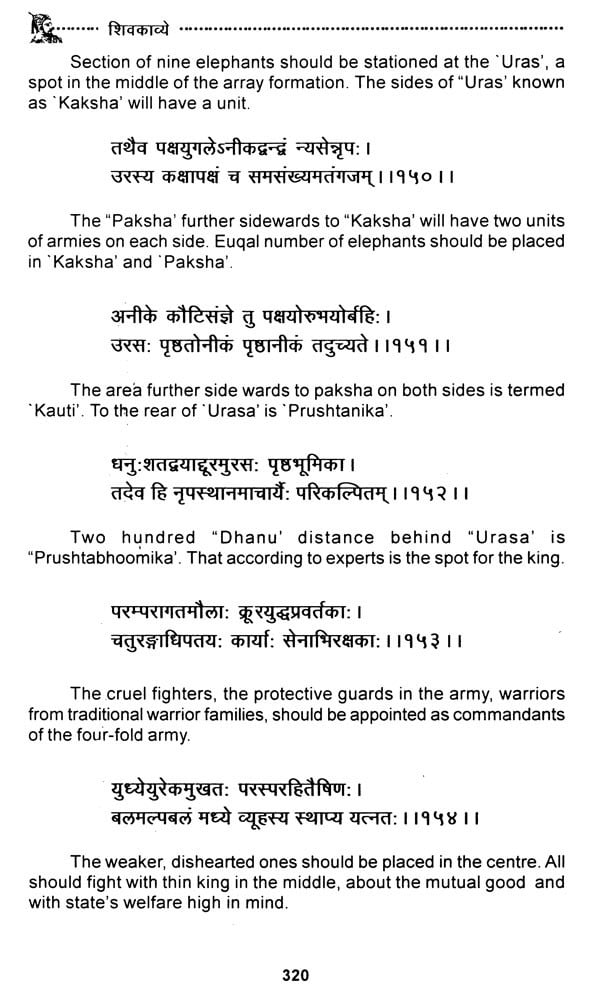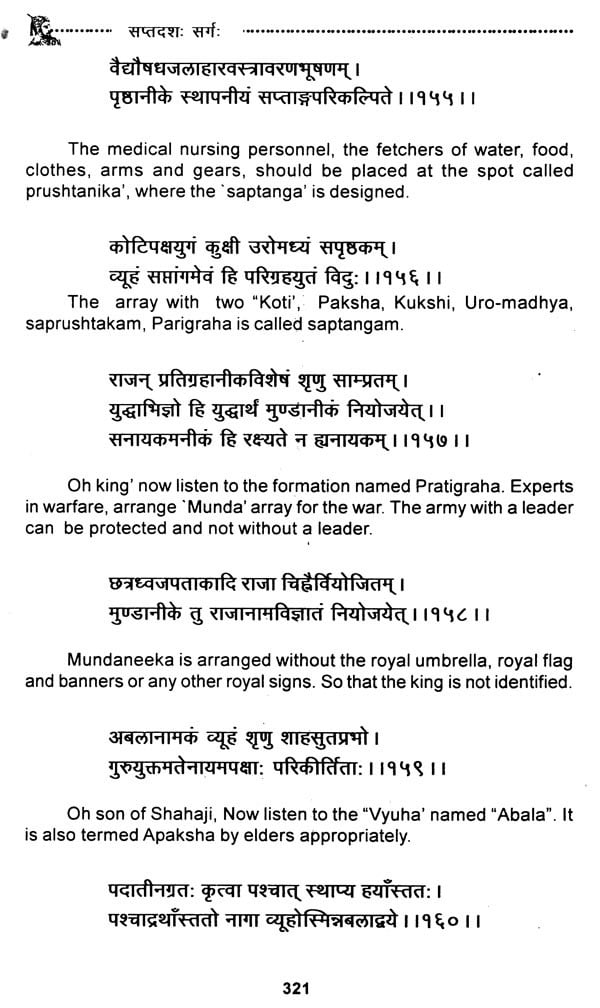
छत्रपति-शिवकाव्यम् (महाकाव्यम्)- Chhatrapati-Shiva Kavyam (Epic)
Book Specification
| Item Code: | UAB766 |
| Author: | Pankaj Chande |
| Publisher: | Kavi Kulaguru Kalidas Sanskrit University |
| Language: | Sanskrit Text with English Translation |
| Edition: | 2007 |
| Pages: | 326 |
| Cover: | HARDCOVER |
| Other Details | 9.00 X 6.00 inches |
| Weight | 560 gm |
Book Description
The problem aggravated when the editor noticed the corrupt reading in the Manuscript. In order to make clear the difficulties only, the editor elucidates the nature of the original and the edited text with the help of many types of indicative marks. If this scheme is to be adopted, then the surface will swell than the body. On one side, the poet seems to have intended to compose a Mahakavya and not to relate history. Shri Goswami named this text as Shivakavya but the poet seems to have a different idea. He mentions his poem as Shivamahakavya (4 Canto) Shivanarapatikavya (5th Canto), Prathistashivanrupala -charukavya (6th Canto), Shivasya Kavya (7th, 14th Cantos) Shivakavya (Cantos 12, 13, 15) and as 'Sukavya' at the end of the Seventh Canto. Even then, the name Shivakavya appears at the end of three cantos. This is evident and the editor's choice seems to be right.
Let the name of the poem be so! The same is the attitude of the poet in mentioning his own name, name of his parents and even name of King Shivaji. There are many places where Shivaji is mentioned as son of Shahaji. Through Shivaji, the poet says 'I swear on the feet of my father' (12-38 Cantos). Swearing on the mother is in vogue. But the poet makes Shivaji to swear on father. Immediately after this, there appear sentences after sentences in the canto (12-40, 12-47) The poet's high regard for Shivaji is quite evident here.
We shall now turn to an interesting issue. In the beginning of the poem itself, the poet presents a character as 'Vanapalabala - son of a Gardener'. This boy meets King Shivaji in the garden. This event is mentioned in the first three cantos (2nd, 3rd & 4th). The present text has only two verses in the second, eight in the third and almost ten in the fourth. There are other verses, which are mentioned (2, 14, 100, 105, 120) but not printed. As a result, the readers' mind cannot become doubtless. In few sentences, the brief summary of the cantos 11 & 12 is given. But, the summary of each canto is not given even in short.
Well, who is this boy of gardener? Who is this boy that Shivaji called him very near and discussed in secret? Before this, in the fragmentary part published as third canto the boy pleads Shivaji to visit the hermitage nearby where a sage called 'Dharanidhar' resides and to please a poor Brahmin called Kumaradasa (?) who is suffering from hunger. Having said this much the boy goes to his hut for Lord Shiva's worship.
Then Shivaji went on foot to the sage and had a vision of the sage. Did that sage not know that King Shivaji ruled the garden? If we take him to be the Dharanidhar of Chinch wad, that would not suit. This boy diverts Shivaji to Chandripuri near Mahabaleshwar on the south of Rajgarh. (Canto 4) But the summary of III canto (P. 6) directs to Mountain-Koundinya, Rajgarh, and Shivapattanam. The important part of this is not printed at all.
What to say? We get perturbed. In the original itself, the numbers are misprinted (Sec.' 36 to 39, 38-39 & 42) Then the editor himself is in trouble. The editor had before him the single manuscript, that too corrupt, with double entrance words, the Sanskritization of places likes Radtondighat as construing the Sanskrit text by filling the missing Sanskrit words and finding a relation with the historical events. This most difficult work was before Shri Goswami and he accomplished it.
The readers get encouraged to find out for themselves the imagination of the editor and to decide what and how much they can assimilate from the Shivakavya of Sakala kale. Still, at places, where the poet referred to few places with their geographical location, it was necessary to facilitate reference by giving maps. This supplement is to be made sometime.
Now we shall turn to Chandrapuri. It was the city of some Pulinda leader, says the poet (Canto 4-39). The episode of this Pulindapati seems to appear here for the first time. It is not known whether any such history is mentioned here before. There is a reference to Ramashram on the shore of Western Ocean. What should be this place? Taking this to mean 'Parasuram', we get reminded of Parasuramakshetra. But, this is only for a moment! The places should be properly identified. The poet has indeed thrown before us a puzzle!
Book's Contents and Sample Pages
